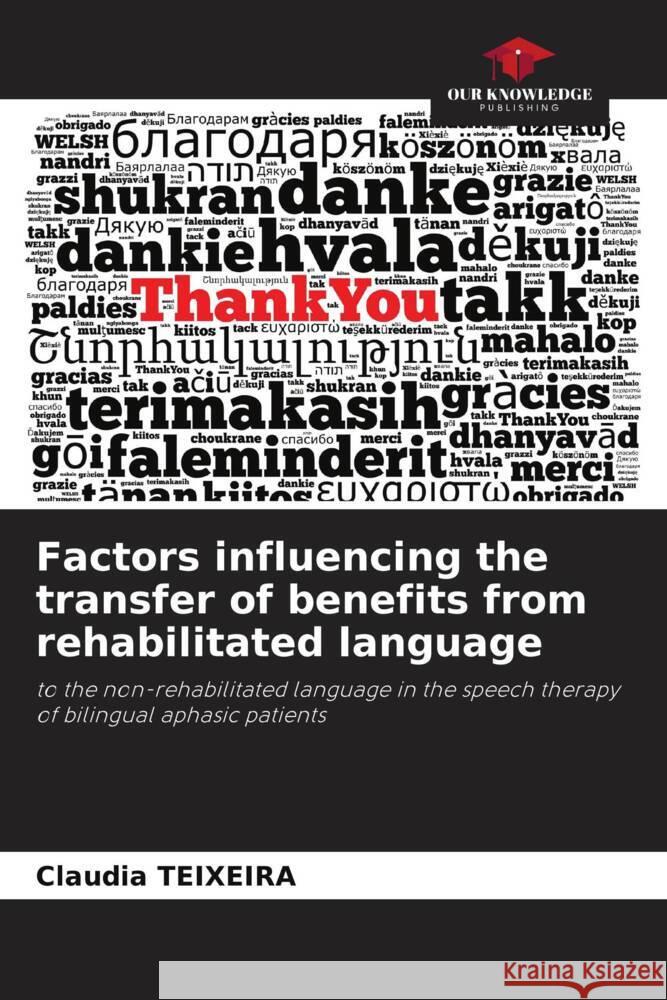Factors influencing the transfer of benefits from rehabilitated language » książka
Factors influencing the transfer of benefits from rehabilitated language
ISBN-13: 9786208253325 / Angielski / Miękka / 2024 / 60 str.
At a time of globalisation, the disappearance of borders and ever-increasing migratory flows since the twentieth century, speech and language therapists are increasingly exposed to bilingual populations with various cognitive and communicative disorders, including aphasia. The wide variability of the resulting disorders and the plurality of bilingualism make bilingual aphasia a particular clinical entity, which cannot be summed up in a single treatment. We therefore sought to identify the factors that might play a part in transferring the therapeutic effects of the rehabilitated language to the non-rehabilitated language. To this end, a bibliometric search led to the selection, reading and qualitative analysis of twenty-six scientific articles. The status of the language treated, the typological proximity of the languages, the nature of the therapy and the nature of the elements included in the therapeutic protocol are the main factors on which it is possible to act in the hope of encouraging this transfer.











